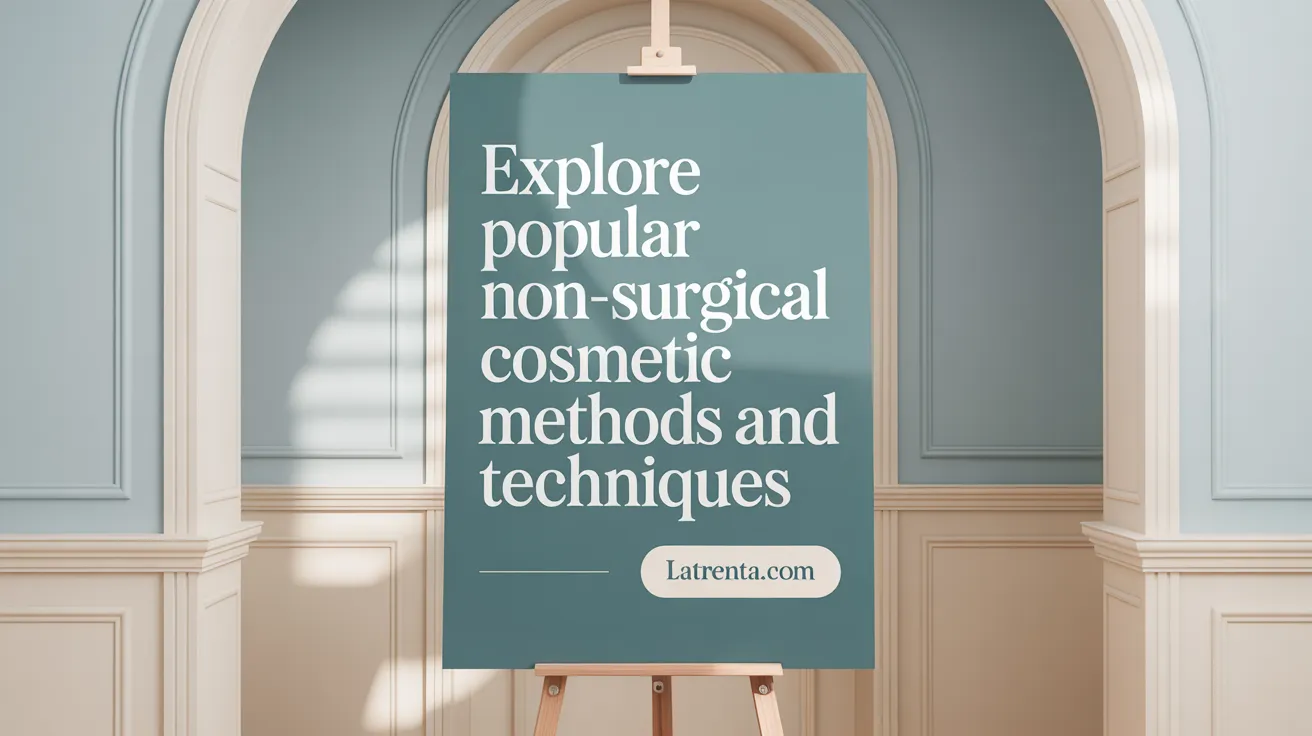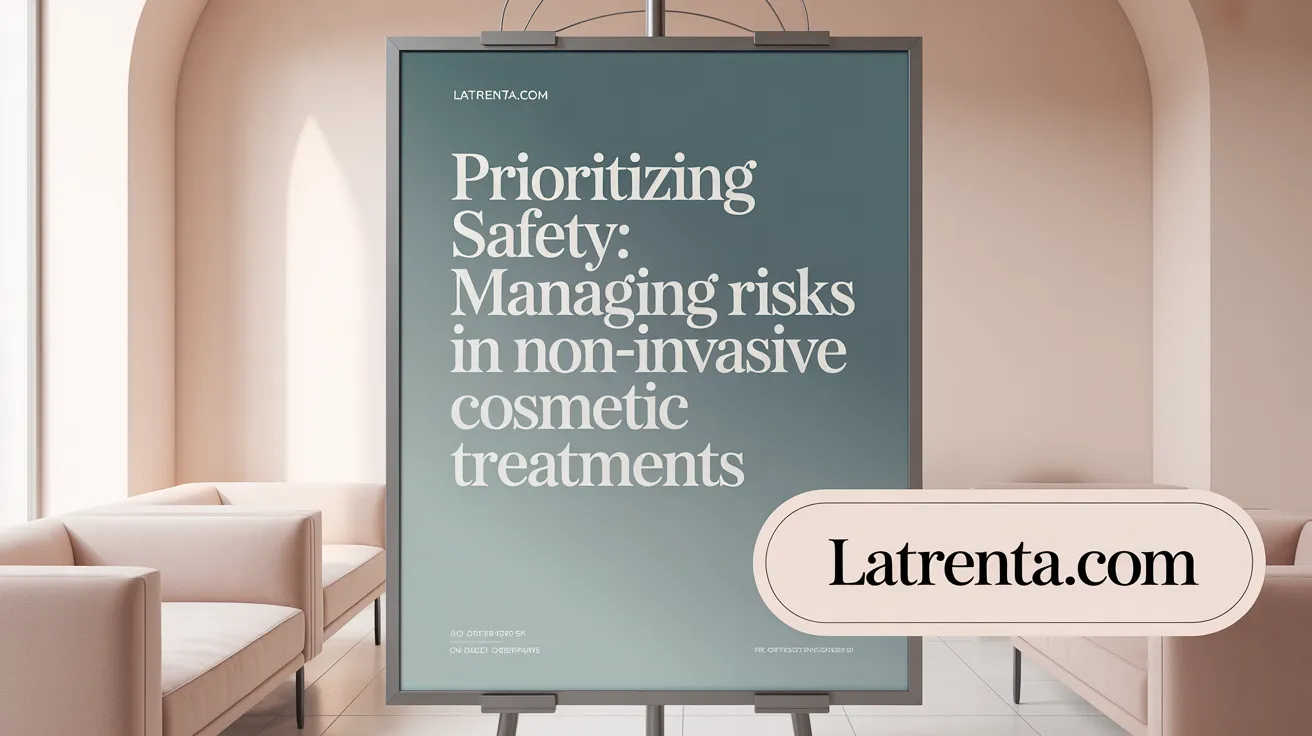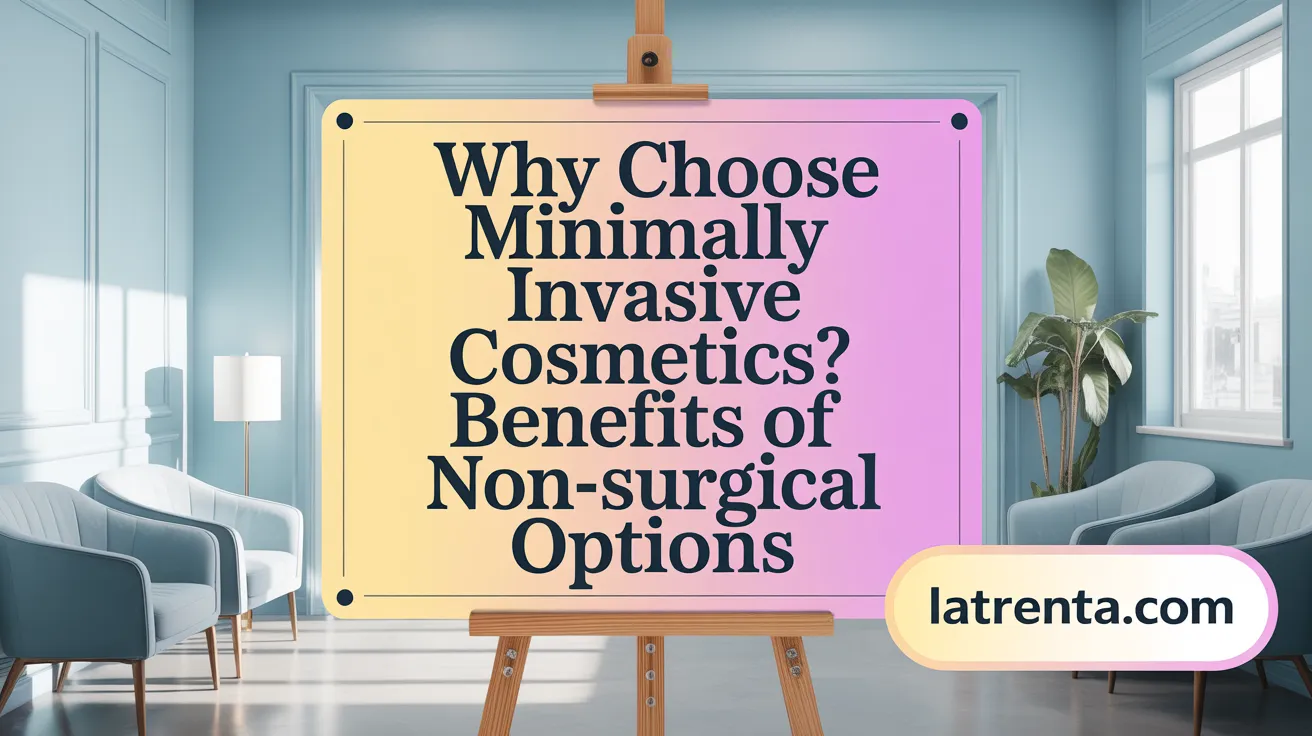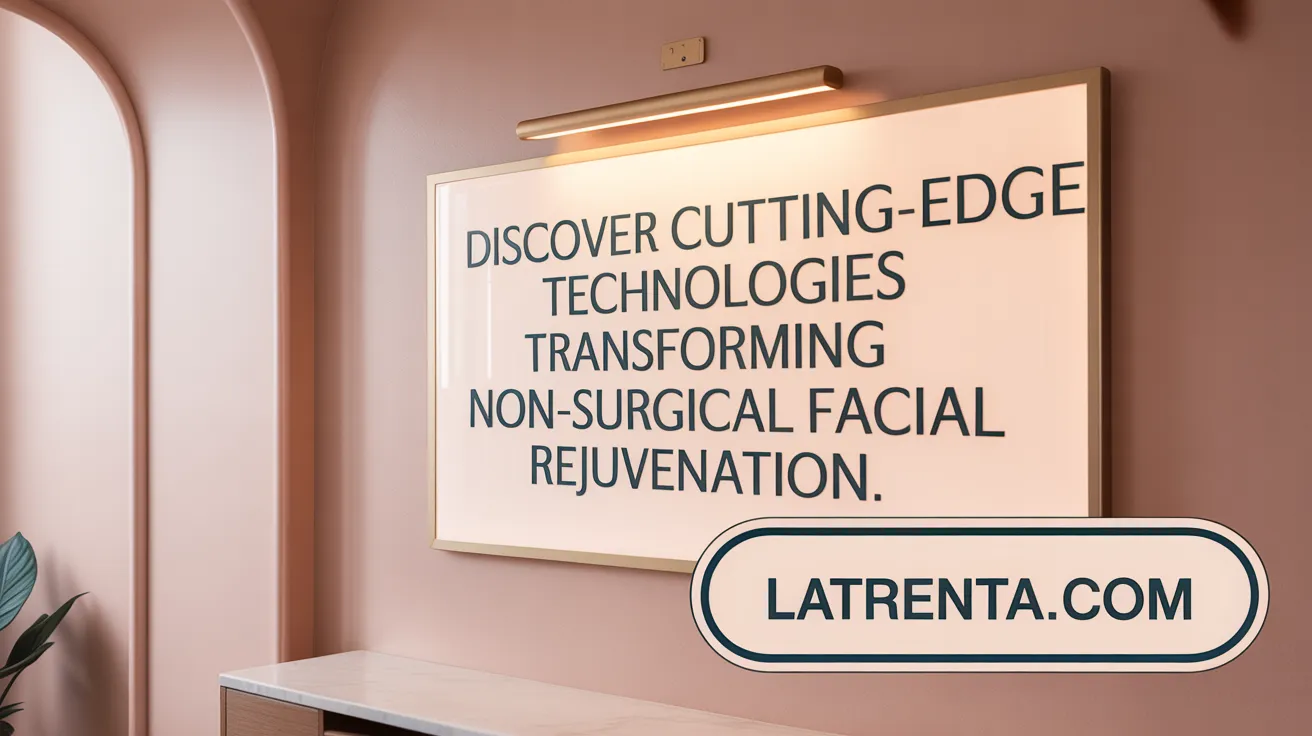Embracing a New Era in Aesthetic Care
Non-surgical cosmetic treatments have revolutionized the way individuals approach facial rejuvenation and body contouring. Offering minimal downtime, reduced risk, and natural-looking results, these procedures have become increasingly popular for those seeking effective yet less invasive alternatives to traditional surgery. This article explores the diverse methods, safety considerations, notable advancements, and how to make informed choices when pursuing non-surgical aesthetic enhancements.
Exploring Common Non-Surgical Cosmetic Methods and Techniques

What are the common methods, procedures, and techniques used in non-surgical cosmetic treatments?
Non-surgical cosmetic treatments encompass a variety of sophisticated procedures aimed at rejuvenating and enhancing appearance without the need for invasive surgery. One of the most popular techniques involves the use of injectable neurotoxins like Botox® and Dysport®. These agents relax specific facial muscles, smoothing out dynamic wrinkles and fine lines around areas such as the forehead, eyes, and mouth. Effects typically last between three to six months, offering a temporary but effective solution for wrinkle reduction.
Another cornerstone of non-surgical facial rejuvenation is dermal fillers, especially those based on hyaluronic acid. These fillers are injected beneath the skin to restore lost facial volume, smooth out wrinkles, and define features like cheeks and lips. Results are often immediate and can last from six months up to two years, depending on the product used.
Laser treatments also play a vital role, with options categorized into ablative and non-ablative resurfacing. Ablative lasers remove outer skin layers to address deep wrinkles, scars, and sun damage, while non-ablative lasers gently heat the deeper skin layers to stimulate collagen production, resulting in a smoother skin texture over time. Intense Pulsed Light (IPL) therapy is another laser-based technique effective for reducing pigmentation, redness, age spots, and improving overall skin tone.
Professional skincare treatments such as chemical peels and microneedling provide additional options for skin enhancement. Chemical peels exfoliate damaged outer layers to reveal fresher skin, improving issues like pigmentation and fine lines. Microneedling involves creating controlled micro-injuries to stimulate natural collagen and elastin production, effectively reducing scars, enlarged pores, and fine lines.
Non-invasive body contouring methods have gained popularity as well. CoolSculpting® employs controlled cooling to target and eliminate stubborn fat pockets, with results visible after a few weeks. Similarly, Kybella® is an injectable treatment that permanently dissolves fat under the chin, effectively reducing double chin appearance.
Finally, devices utilizing radiofrequency energy and ultrasound technology are used for skin tightening and lifting. Ultherapy®, for example, uses ultrasound waves to stimulate collagen production, resulting in a gradual lifting and firming of the skin without surgery. Thread lifts, involving special sutures anchored beneath the skin, provide a minimally invasive means to lift sagging tissues and enhance facial contours.
Overall, these techniques combine to offer comprehensive, customizable options for individuals seeking effective facial and body rejuvenation in a minimally invasive manner. The procedures are performed by trained professionals using advanced technology, emphasizing safety, natural results, and minimal downtime.
Safety Profiles and Risk Management in Non-Invasive Procedures

What are the safety considerations and safety profiles of non-invasive cosmetic procedures?
Non-invasive cosmetic procedures are widely regarded as safe when performed by qualified practitioners. Most adverse events tend to be mild, temporary, and manageable. Common complications include bruising, swelling, redness, and localized skin reactions, which occur in less than 1% of cases. Among different treatments, dermal fillers exhibit the highest rate of adverse events, but these are typically minor. FDA-approved products like Juvéderm, Dysport, and devices such as Ultherapy and EMFACE have safety probabilities over 85%, underscoring their reliability. Nonetheless, emerging risks exist with unregulated therapies like exosomes, and the global disparity in regulation, especially with medical tourism, can influence safety outcomes. Ensuring strict adherence to safety standards, comprehensive adverse event reporting, and the expertise of trained professionals are vital for patient safety.
What are the potential risks, complications, and safety concerns associated with non-surgical cosmetic treatments?
Although considered safe, non-surgical treatments are not risk-free. Potential issues include allergic reactions, infections, bruising, swelling, asymmetry, and unsatisfactory aesthetic results. Serious but rare complications, such as vascular occlusion, tissue necrosis, and nerve damage, can occur if procedures are improperly performed or if practitioners lack adequate training. Proper technique combined with detailed knowledge of facial anatomy and use of FDA-approved products significantly reduces these risks. Some treatments, particularly injectables and chemical peels, pose additional risks like hyperpigmentation, scarring, or unintended diffusion leading to functional impairments. Management of these complications may involve medical intervention and corrective procedures. Ultimately, thorough patient consultation, informed consent, and adherence to established safety protocols are essential to minimize risks and ensure optimal outcomes.
The Advantages of Minimally Invasive Cosmetics Over Surgery
 Minimally invasive cosmetic options have gained popularity because they provide significant benefits over traditional surgery, especially for those seeking subtle and natural-looking improvements. One of the primary advantages is the minimal downtime involved in procedures such as Botox® , dermal fillers, and non-invasive fat reduction. Patients often experience little to no recovery time, allowing them to return to their routines shortly after treatment. These procedures are also associated with a lower risk profile, reducing the chances of complications like scarring, infections, or nerve damage.
Minimally invasive cosmetic options have gained popularity because they provide significant benefits over traditional surgery, especially for those seeking subtle and natural-looking improvements. One of the primary advantages is the minimal downtime involved in procedures such as Botox® , dermal fillers, and non-invasive fat reduction. Patients often experience little to no recovery time, allowing them to return to their routines shortly after treatment. These procedures are also associated with a lower risk profile, reducing the chances of complications like scarring, infections, or nerve damage.
Cost is another attractive aspect, as non-surgical treatments typically cost less upfront than surgical interventions. They also offer the benefit of rapid or immediate results; for example, fillers can produce a noticeable enhancement right after treatment, while Botox effects appear within days. This instant or quick-onset outcome is especially appealing for individuals with busy lifestyles.
The subtlety of results is a major advantage, enabling improvements that look natural rather than artificial. These treatments can be tailored to individual goals, and procedures can be repeated or adjusted over time to maintain freshness and address aging signs gradually.
Moreover, these options are highly suitable for those wary of surgery or who prefer less invasive modalities. They can also serve as preventative measures to slow age-related changes, often delaying or reducing the need for more invasive surgery later.
Despite their many benefits, it’s important to recognize the limitations of minimally invasive procedures. They generally cannot produce the dramatic results achievable through surgical facelifts or body contouring surgeries, which may be necessary for more severe sagging or volume loss.
In summary, for patients seeking less trauma, faster recovery, natural results, and affordability, minimally invasive cosmetic treatments offer a compelling alternative with a proven track record of safety and effectiveness.
Selecting Qualified Providers and Ensuring Treatment Safety

How can patients choose qualified providers and ensure that treatments are performed safely?
Selecting a qualified provider is essential for safe and effective non-invasive cosmetic treatments. Patients should verify that the practitioner holds appropriate medical credentials such as a medical license, nursing license, or certification as a physician assistant. Specialized training in specific procedures like Botox, fillers, or laser treatments is equally important. Consulting with experienced, board-certified professionals helps ensure that the provider has the expertise necessary for optimal results.
Reviewing patient testimonials, before-and-after photos, and online reviews can provide insights into the practitioner's reputation and success rate. Patients should also inquire about the provider’s experience with particular treatments, such as skin resurfacing or fat reduction procedures.
It is vital to confirm that the treatment occurs in a licensed medical facility that adheres to strict health and safety standards comparable to a standard medical office. Transparency about potential risks, complications, and realistic outcomes should be a staple of the consultation. Discussing potential side effects and complications openly contributes to informed consent.
Patients should stay away from providers who guarantee results or employ high-pressure sales tactics. Instead, they should seek centers known for personalized care and comprehensive consultations, like Mount Sinai or similar reputable institutions. Ensuring that products used are FDA-approved is also critical for safety, as highlighted by resources focusing on safe use of injectables and fillers.
Finally, choosing a provider who offers thorough, personalized consultations allows for tailoring treatments to individual goals and medical history, further ensuring safety and efficacy.
Innovations and Trends Shaping Non-Surgical Facial Rejuvenation
 The landscape of non-surgical facial rejuvenation continues to evolve rapidly, driven by technological advancements and innovative materials. Currently, the most prominent trends include the adoption of sophisticated laser platforms such as HALO Pro, MOXI, SofWave, and TempSure. These devices employ fractional, non-ablative, or minimally invasive laser energy to stimulate collagen production, improve skin texture, and enhance overall skin quality with minimal recovery time.
The landscape of non-surgical facial rejuvenation continues to evolve rapidly, driven by technological advancements and innovative materials. Currently, the most prominent trends include the adoption of sophisticated laser platforms such as HALO Pro, MOXI, SofWave, and TempSure. These devices employ fractional, non-ablative, or minimally invasive laser energy to stimulate collagen production, improve skin texture, and enhance overall skin quality with minimal recovery time.
In the realm of injectables, there has been a significant shift towards longer-lasting and collagen-stimulating fillers. Hyaluronic acid formulations now offer extended durability, while materials like Sculptra and Radiesse also stimulate natural collagen growth, delivering subtle, natural-looking results over time. Advanced neuromodulator techniques, including Micro-Botox and baby Botox, allow for targeted muscle relaxation to address specific aging signs and contouring, offering more refined outcomes.
Combination therapies have gained popularity, often integrating Botox, dermal fillers, Platelet-Rich Plasma (PRP), radiofrequency (RF) microneedling, chemical peels, and laser resurfacing. These tailored approaches maximize skin rejuvenation, address multiple aging factors, and provide personalized, natural results.
Emerging technologies include artificial intelligence (AI)-assisted facial mapping and bio-stimulatory therapies, which enhance treatment precision and promote tissue regeneration. Materials like stem cells and platelet-rich growth factors are being explored for their regenerative potential.
Energy-based devices such as Ultherapy, Thermage, and RF microneedling are now standard for non-invasive skin tightening and lifting, with improvements in safety and efficacy. Innovative laser platforms combining fractional CO2 and intense pulsed light (IPL) improve skin renewal and pigmentation issues more effectively.
Non-invasive fat reduction and muscle toning devices like CoolSculpting and EMSculpt have also made a significant impact, reducing stubborn fat and enhancing muscle definition without surgery.
Looking ahead, the focus remains on achieving natural, subtle enhancements with longer-lasting results. Innovations aim to improve patient safety, comfort, and satisfaction, emphasizing minimally invasive, regenerative, and highly personalized treatments. This trend towards prejuvenation and preventative aesthetics reflects a broader shift in aesthetic medicine, making non-surgical options a leading choice for those seeking effective, low-risk facial rejuvenation.
Ensuring Beauty with Confidence and Care
Non-surgical cosmetic treatments offer an appealing blend of efficacy, convenience, and safety for individuals seeking aesthetic enhancements without the invasiveness of surgery. By understanding the available procedures, recognizing associated risks, and choosing experienced providers operating within regulated environments, patients can enjoy rejuvenated appearances with minimal downtime and natural outcomes. Continued innovations and adherence to strict safety standards promise to further elevate the quality and accessibility of these minimally invasive options, empowering more people to achieve their aesthetic goals confidently and responsibly.
